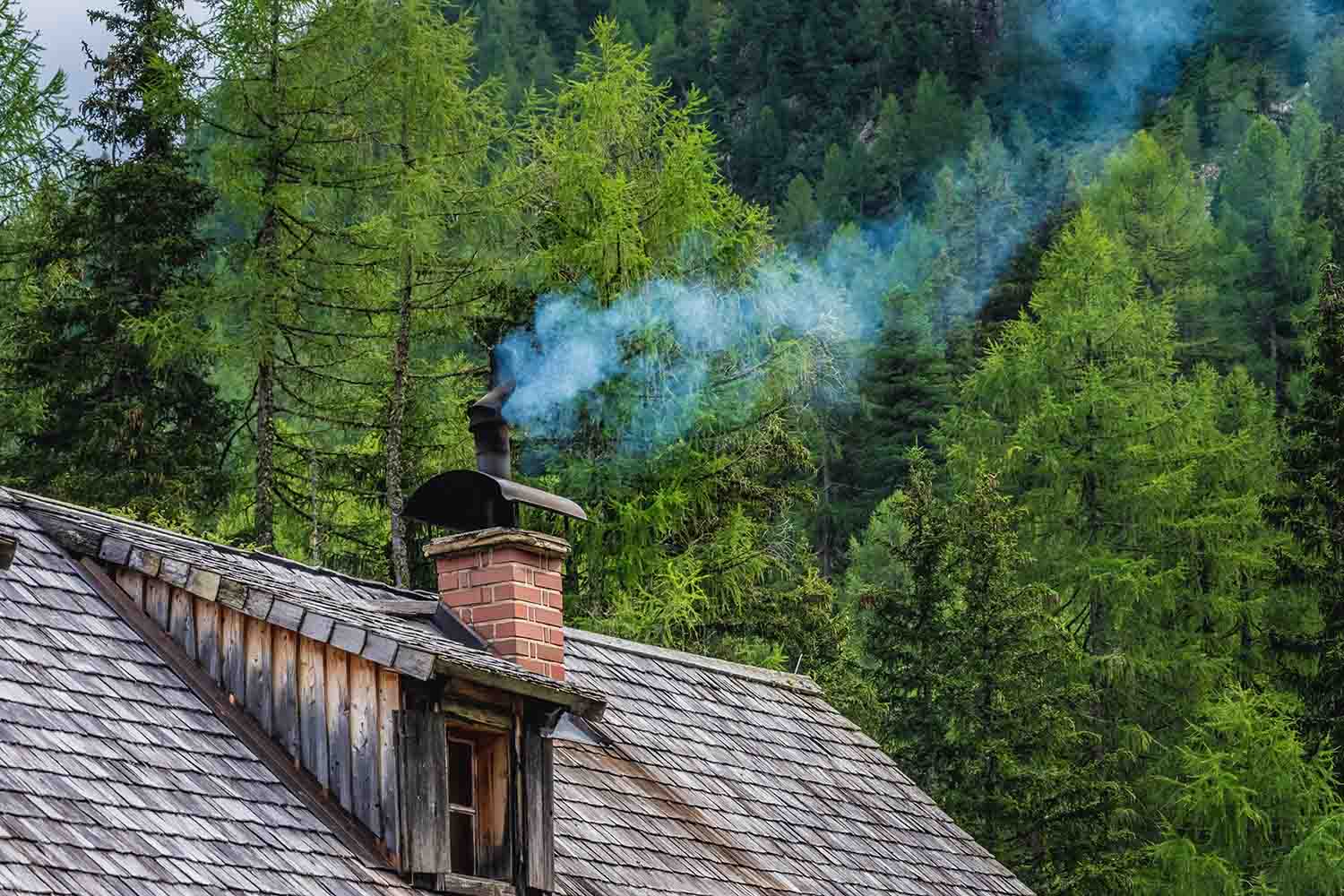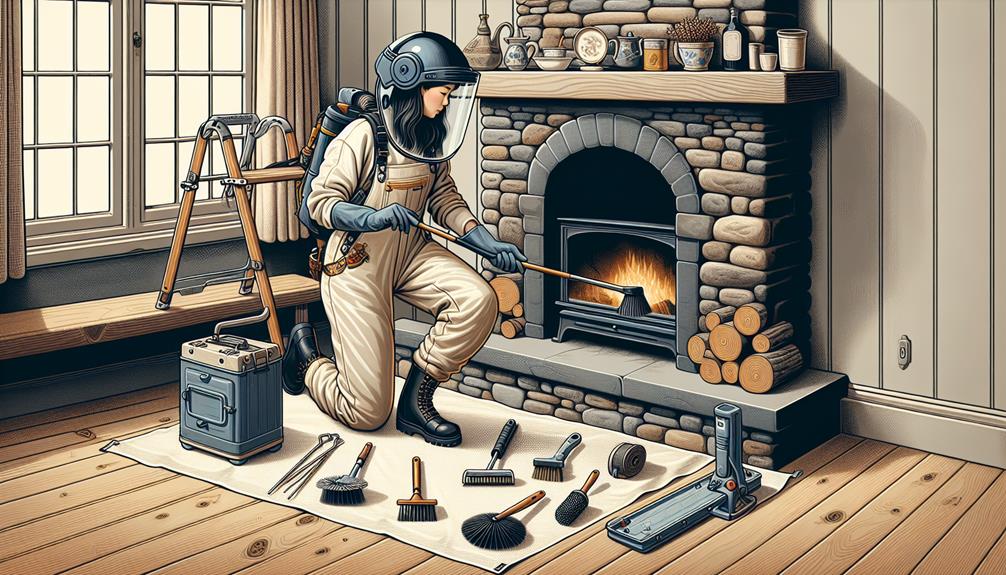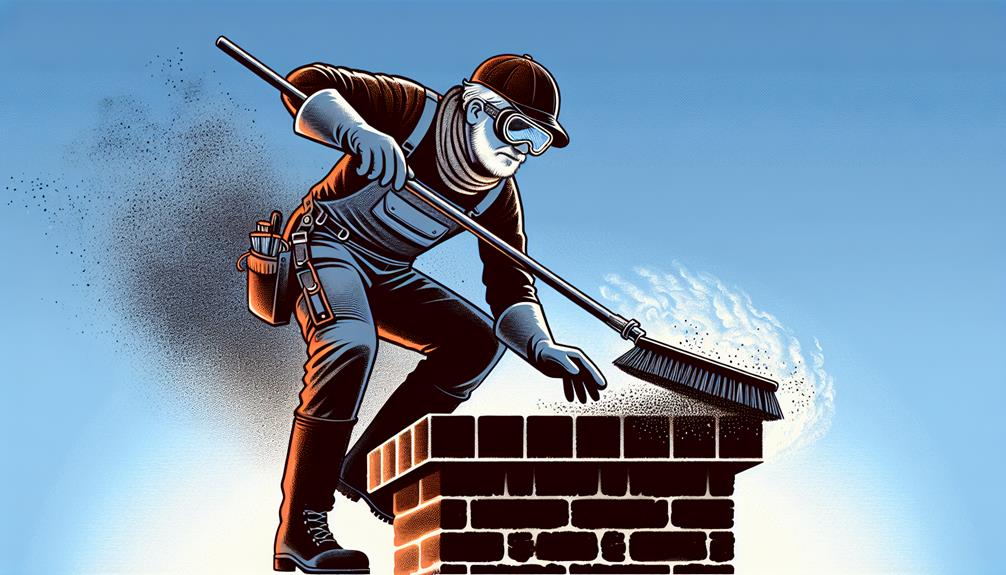During the colder months, it’s important to ensure that your chimney is clean and safe. Regular chimney sweeping is crucial for maintaining a cozy and secure home. In this step-by-step guide, we’ll walk you through the process of sweeping your chimney and teach you how to sweep a chimney properly, from understanding the importance of regular cleaning to choosing the right tools.
Whether you have a traditional fireplace or a modern one, we’ll provide you with the knowledge you need to keep your chimney in top shape. Don’t take any chances with a potential chimney fire – let’s dive into the essential steps for keeping your home warm and protected.
Key Takeaways: How to Sweep a Chimney Safely
- Regular chimney cleaning is crucial for maintaining the safety and efficiency of your fireplace or wood stove.
- Neglecting chimney cleaning can lead to carbon monoxide leaks and flue gas damage, posing serious health risks.
- Regular chimney inspections and cleanings are crucial for chimney safety and proper functioning.
- Hiring a professional chimney sweep ensures thorough and safe cleaning of your chimney.
Importance of Regular Chimney Cleaning
Regular chimney cleaning is essential for maintaining the safety and efficiency of your fireplace or wood stove. Creosote buildup from wood smoke is the main cause of chimney fires, which can reach temperatures of 2,000°F and cause extensive damage. By regularly cleaning your chimney, you can effectively remove this creosote and reduce the risk of fires. Neglecting chimney cleaning can lead to carbon monoxide leaks and flue gas damage, posing serious health risks. Therefore, prioritize regular chimney cleaning to ensure the safety, efficiency, and longevity of your fireplace or wood stove.
Tips for Keeping Your Chimney Clean
To keep your chimney clean, use well-seasoned, dry wood and EPA-certified wood stoves for efficient burning and less creosote buildup. Here are some tips for maintaining a clean chimney and preventing chimney fires:
-
DIY Chimney Cleaning:
-
Use a chimney brush and rods to remove soot and debris.
-
Wear protective gear, such as gloves and goggles, when cleaning.
-
Preventing Chimney Fires:
-
Avoid burning green or wet wood, as it produces more creosote.
-
Install a chimney cap to prevent debris and animals from entering.
-
Common Chimney Cleaning Mistakes:
-
Neglect regular inspections and cleanings.
-
Ignore signs of chimney damage or blockages.
Regular chimney cleaning is necessary for a safe and efficient fireplace. Clean the chimney in the spring or summer when it’s not in use. By following these tips and conducting regular maintenance, you can ensure a clean and safe chimney.
Chimney Cleaning for Different Fireplaces
To clean different fireplaces, choose the appropriate method for each type of chimney. Regular chimney inspections and cleanings are crucial for chimney safety and proper functioning. Gas and oil fireplaces can also have chimney blockages and corrosive byproducts that affect efficiency.
Soot buildup in oil chimneys can lead to dangerous carbon monoxide leaks, while combustion byproducts in gas chimneys can damage the flue liner over time. Gas or oil chimneys usually require a Level 1 inspection, while wood stove chimneys need annual cleaning. Understanding the specific needs of each type of fireplace helps prioritize chimney maintenance for a safe and efficient heating system.
This soot can buildup and restrict the flow of flue gases such as nitrogen, carbon dioxide and water vapor. Over time, carbon monoxide (a tasteless, odorless, poisonous gas) can build up in your home with this soot buildup if your furnace is not properly vented or your chimney isn’t properly swept.
https://tjschimneyservice.com/why-you-need-to-clean-your-oil-fired-furnace-chimney/#:
Steps to Sweep Your Chimney
Inspect the flue from the bottom using a flashlight and mirror or by looking up from the fireplace. This step is crucial to identify any issues that may need attention. Once you have assessed the condition of the flue, you can proceed with the cleaning process. Here are the steps to sweep your chimney:
- Gather the necessary tools and protective gear, including a mask and gloves.
- Lay a dust sheet in front of the fireplace to protect the floor from debris.
- Cut the brush to fit the size of the flue and attach it to a leading rod.
- Secure a sheet with a hole to the top of the fireplace opening to prevent dust and soot from falling.
- Push the brush up the chimney, turning it to the right, to dislodge dirt and soot.
- Inspect the chimney with a torch and repeat the process if necessary.
- Warm the chimney with a heat source and check for proper smoke flow.
Following these cleaning techniques will help you maintain a clean and safe chimney. However, if you encounter any common issues or prefer professional assistance, it is advisable to hire a chimney sweep. Don’t forget to schedule regular inspections and cleanings for proper chimney maintenance.
Tools for Cleaning a Chimney
To clean a chimney effectively, use specific tools designed for the task. Choose a chimney brush that fits your flue size – a metal brush for masonry flues and a poly brush for stainless steel flues. Consider the length of extension rods to reach the entire chimney. Clean the chimney regularly to prevent creosote and debris buildup. Take into account the material of your flue when selecting the appropriate tools – masonry and stainless steel flues have different cleaning requirements. Decide whether to clean it yourself or hire a professional chimney sweep.
Necessary Equipment and Safety Precautions for Chimney Sweeping
To effectively sweep a chimney, you will need the following equipment and safety precautions:
-
Chimney cleaning tools: Invest in a chimney brush, chimney rods, and a vacuum cleaner designed for chimney cleaning. These tools will help remove soot, creosote, and debris from the chimney.
-
Chimney safety gear: Prioritize your safety by wearing protective clothing, including goggles, gloves, and a dust mask. These items will shield you from harmful particles during the cleaning process.
-
Chimney maintenance tips: Regularly inspect your chimney for signs of damage, such as cracks or loose bricks. Ensure the chimney cap is in good condition to prevent the entry of birds, animals, or debris.
Importance of Hiring a Professional Chimney Sweep
Hiring a professional chimney sweep ensures thorough and safe cleaning of your chimney. DIY cleaning can lead to accidents and inadequate removal of debris and blockages, increasing the risk of accidents and chimney fires. Regular chimney maintenance is essential for efficient fireplace operation. By hiring a professional, you avoid DIY risks and benefit from their expertise. They can identify signs of a dirty chimney, provide maintenance advice, and issue certificates for insurance purposes. To find a reputable chimney sweep, ask for recommendations, check online reviews, and verify membership in recognized associations. The cost varies based on chimney size and cleaning level, but the peace of mind and safety make it worthwhile.
Sweeping Methods and Considerations
When sweeping a chimney, consider different methods for effective removal of creosote buildup, maintaining the flue’s integrity, and prioritizing safety. Some key factors to keep in mind include:
- Creosote removal: Use the appropriate brush and technique to effectively remove creosote buildup in the flue, which poses a fire hazard.
- Flue maintenance: Regular chimney sweeping helps maintain the flue’s integrity, preventing blockages and ensuring proper ventilation.
- Chimney safety: Prioritize safety by wearing protective gear and using sturdy equipment, such as goggles, gloves, and a ladder or scaffolding when accessing the chimney.
Remember to select the right brush for your specific flue type, whether it’s a metal liner, clay liner, brick flue, or rendered flue. Exercise caution when sweeping rendered flues to avoid damaging the rendering. By considering these factors, you can ensure a thorough and safe chimney sweeping process.
Differences between Traditional and Power Sweeping
The differences between traditional and power chimney sweeping methods can be understood by considering the brush type and movement used, as well as the effectiveness and potential damage of each approach.
Here are the key differences:
- Traditional sweeping uses bristles on the brush, while power sweeping utilizes nylon strands.
- The brush movement differs as well, with traditional sweeping being manual and power sweeping being rotational.
- In terms of effectiveness, power sweeping is generally more effective in removing deposits due to the rotational movement and the use of nylon strands.
- However, it is important to consider the potential damage that power sweeping can cause to older flue renderings.
- As a result, power sweeping is often more appropriate for heavy creosote deposits, while traditional sweeping may be better suited for less severe buildup.
Final Steps and Considerations
To complete the chimney sweeping process, there are a few final steps and considerations you should keep in mind:
-
Chimney inspection: After sweeping the chimney, inspect it for any signs of damage or wear, such as cracks or loose bricks. This will ensure the safety and efficiency of your chimney.
-
Chimney maintenance checklist: Create a checklist of regular chimney maintenance tasks, including checking the chimney cap, cleaning the fireplace, and scheduling annual chimney sweeps. Following this checklist will help prevent future problems and prolong the lifespan of your chimney.
-
Chimney safety: Always prioritize chimney safety by installing a chimney cap to prevent debris and animals from entering. Keep flammable materials away from the fireplace and consider installing carbon monoxide detectors for added safety.
Frequently Asked Questions
How Often Should I Sweep My Chimney?
Regular chimney sweeping is essential to maintain its functionality and prevent potential hazards. Keep an eye out for signs such as soot buildup, smoke indoors, or strong odors. Familiarize yourself with effective methods to keep your chimney clean between professional cleanings and avoid falling for common misconceptions.
Can I Clean My Chimney Myself or Do I Need to Hire a Professional?
You have the option to clean your chimney yourself or hire a professional. The frequency of cleaning depends on how important it is to maintain your chimney’s cleanliness. Remember to prioritize safety precautions during the cleaning process.
What Are the Potential Dangers of Not Cleaning My Chimney Regularly?
Neglecting regular chimney cleaning can result in fire hazards, carbon monoxide poisoning, structural damage, decreased efficiency, and increased risk of chimney fires. Prioritizing chimney maintenance is essential for safety.
Are There Any Specific Tools or Equipment I Should Use for Chimney Sweeping?
To sweep a chimney, you’ll need specific tools and equipment like a chimney sweeping brush, rods, and a vacuum. These tools are essential for effectively removing soot and debris from your chimney, ensuring its proper functioning and minimizing fire hazards.
How Long Does It Typically Take to Sweep a Chimney?
The time it takes to sweep a chimney can vary based on factors such as chimney size, buildup level, and technique used. For an accurate estimate, it is recommended to consult a professional.











